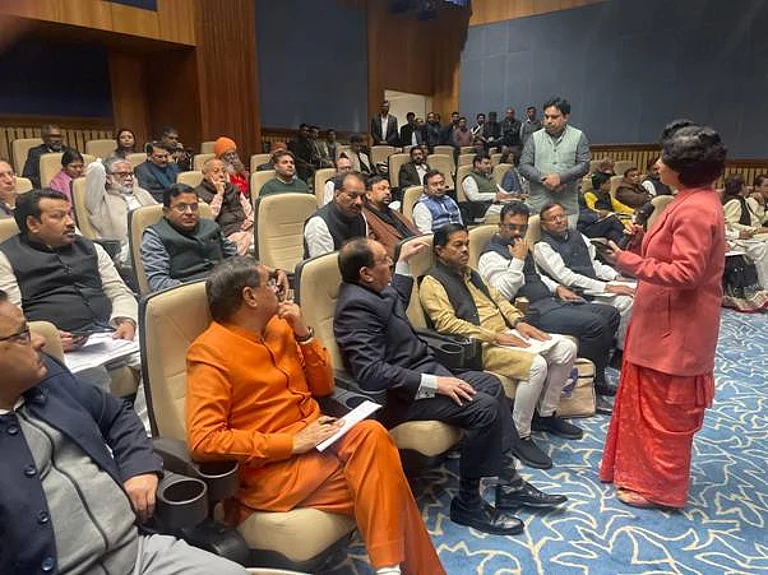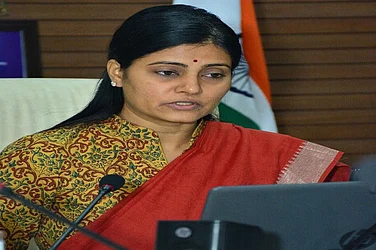Tula, a resident of Phangulgavhan village in rural Maharashtra, was only 19 when poor vision forced him to abandon his college education. Living with polio, he faced tremendous challenges, often crawling alongside his mother to reach a local eye camp in 2015. There, he received his first pair of glasses, a simple intervention that changed his life. With restored sight, Tula returned to his studies, secured employment, and today supports a family of his own.
Tula’s inspiring journey has been a catalyst for Young Eyes, a school-based vision programme that continues to provide free spectacles to children throughout the region, transforming lives and futures.
Yet, Tula’s story is just one among millions in India, where an estimated 70 crore people live with preventable sight loss, according to a recent global report.
Released on World Sight Day by the International Agency for the Prevention of Blindness (IAPB) in collaboration with the Seva Foundation and the Fred Hollows Foundation, the Value of Vision report highlights how affordable, timely interventions like cataract surgery and glasses could unlock vast socio-economic benefits for the country.
The report was unveiled during a high-level meeting at the United Nations General Assembly, hosted by IAPB and the UN Friends of Vision Group. It showed how India can benefit from prioritising eye health, urging everyone to love their eyes by getting an eye test.
Worldover, nearly 1 billion people in low-and middle-income countries are living with avoidable vision loss, according to the report.
It suggested six simple, cost-effective priorities to prevent sight loss, which include early detection, providing reading glasses on the spot, capacity building in the eye health workforce, coupled with surgical productivity and removal of barriers such as costs, easy access, and social stigma associated with glasses.
As per the report, these interventions could unlock Rs 3.6 lakh crore for the Indian economy every year, with a Rs 16 return for every Rs 1 invested. It also urged nationally coordinated efforts along with the execution of eye health campaigns across the length and breadth of the country.
“India is the first nation to launch the National Programme for Control of Blindness and Visual Impairment policy. It is 100 per cent centrally sponsored and a strong example of eye health for all. More than 98 lakh cataract surgeries were performed in the fiscal year 2024-25 under the 2024-25, which is the highest in the last five years,” Peter Holland, CEO, IAPB said.
“Such policies help to build a strong foundation towards positive eye health for every Indian, creating real socio-economic impact that helps to shape the economy of India,” he added.
Holland recommended early detection of eye health issues in schools with good follow-up, including near vision glasses to further prevent avoidable sight loss.
The expert also suggested innovative technologies such as mobile eye clinics, tele-consultations, tele-optometry, and preventive screenings for eye health.
“Start-ups, large organisations, government, as well as social institutions need to come forward to ensure widespread access to meet the eye health needs of remote India,” Holland said.
On the day, the IAPB also launched the Love Your Eyes campaign, calling on everyone to love their eyes this World Sight Day and book an eye test.
"When I could not see the blackboard, I thought my dream of studying was over. The day I received my glasses, I felt like I had been given my life back," says Tula.
Elizabeth Kurian, Chief Functionary and Trustee of Mission for Vision, India, said, “Nearly 1 billion people live daily with avoidable sight loss, especially in low- and middle-income countries, limiting their productivity and potential. Investing in vision is not just charity; it is smart economics.
At Mission for Vision, we see every day how a pair of glasses or cataract surgery can restore livelihoods and lift families out of poverty. If we are serious about sustaining growth and equity, eye health must move from the margins to the mainstream of national policy. India’s National Programme for Control of Blindness and Visual Impairment is a great example of the innovation, financing, and commitment that this landmark case for investment into eye health is calling for."
Most sight loss can be prevented with simple and affordable interventions like expanding sight tests, providing glasses and improving cataract surgery. This World Sight Day, we urge everyone, from governments and businesses to schools and families, to make eye health a priority, said Holland.


























